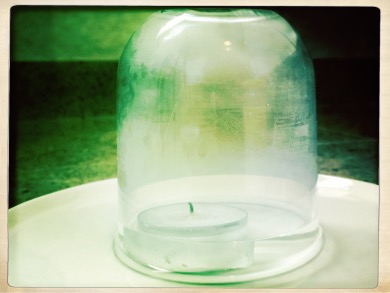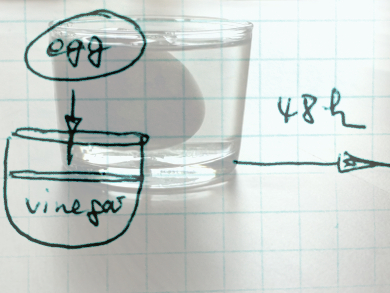Children are curious and love experiments. Here’s a growing list of ideas to get young children excited about chemistry with simple experiments you can easily do at home in the kitchen and chemistry related things you can do together with young children.
We are sure you have more exciting ideas. Please let us know in the comments below.
Simple Kitchen Experiments

What happens if you cover a lit candle in a water basin with a glass?

An egg behaves like a bouncing rubber ball

A perfect kitchen experiment for young kids and fun for all ages!
🔬💎Growing Salt Crystals
Pour boiling water into a heat-resistant glass or cup and add salt gradually. With a spoon, stir again and again until the salt has dissolved. If the water can absorb no more salt, the salt will settle to the bottom. Carefully pour the salt water into a second and third glass and leave the salt bottom sediment behind.
Place a soup plate in a warm, quiet place. Place the two glasses to the right and left of the plate. Dip one end of a wollen string into the left glass and the other end into the right. It should hang slightly above the plate. It will take a few days for the crystals to start growing. The glass must not be moved to grow the crystals.
Hot water can hold more salt than cold water. Over time, the water cools, and water evaporates. The excess salt is deposited on the thread in the form of crystals.
Hands-On Activities

An interactive introduction to the building blocks of matter for children of all ages
Molecules from Chestnuts
You need chestnuts, matches or toothpicks, and a skewer to make the holes. For very young children, simple molecules such as H2, N2, or H2O are appropriate. With more practice and skill, you can become more complicated.
Invisible Ink
Squeeze fresh lemon juice into a cup, dip a cotton swab or paintbrush into the juice and let your kid write or draw a secret message on a piece of paper. Wait until the lemon juice is completely dry.
Hold the paper close to a heat source, such as a candle flame, stovetop, or a hair dryer. Why the lemon juice turns brown when it is heated, making the message visible, is explained in the short video: Invisible Ink – Chemistry with Small Children.





